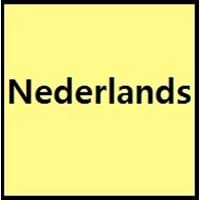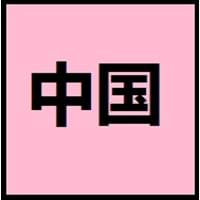Countries
Aruba, Belgium, Curacao, Netherlands, Sint Maarten, Suriname
China, Hong Kong, Macau, Singapore, Taiwan
National Language
Aruba, Belgium, Curacao, Netherlands, Sint Maarten, Suriname
China, Taiwan
Second Language
South Africa
Republic of Brazil
Speaking Continents
Asia, Europe, North America, South America
Asia
Minority Language
France, Germany, Indonesia
Indonesia, Malaysia
Regulated By
Nederlandse Taalunie (Dutch Language Union)
Chinese Language Standardization Council, National Commission on Language and Script Work, Promote Mandarin Council
Interesting Facts
- Dutch language consist of extremely long words. The longest dutch word in the dictionary is 53 letters long.
- There exists 75% borrowed words in Dutch language, and a lot of those are French, English and Hebrew.
- Chinese language is tonal, since meaning of a word changes according to its tone.
- In Chinese language, there is no grammatical distinction between singular or plural, no declination of verbs according to tense, mood and aspect.
Similar To
German and English Languages
Not Available
Derived From
Not Available
Not Available
Alphabets in
Dutch-Alphabets.jpg#200
Chinese.jpg#200
Scripts
Latin
Chinese Characters and derivatives
Writing Direction
Left-To-Right, Horizontal
Left-To-Right, Horizontal, Top-To-Bottom
Thank You
dankjewel
谢谢 (Xièxiè)
How Are You?
hoe gaat het met je?
你好吗? (Nǐ hǎo ma?)
Good Night
goede Nacht
晚安 (Wǎn'ān)
Good Evening
goedenavond
晚上好 (Wǎnshàng hǎo)
Good Afternoon
goedemiddag
下午好 (Xiàwǔ hǎo)
Good Morning
goedemorgen
早安 (Zǎo ān)
Please
alsjeblieft
请 (Qǐng)
I Love You
Ik hou van jou
我爱你 (Wǒ ài nǐ)
Excuse Me
pardon
劳驾 (Láojià)
Dialect 1
Gronings
Mandarin
Where They Speak
Netherlands
China, Malaysia, Singapore, Taiwan
Where They Speak
Denmark, Germany, Netherlands
China, United States of America
Where They Speak
Belgium, Netherlands
China, Malaysia, Singapore, Vietnam
Native Name
Nederlands
中文 (zhōngwén)
Alternative Names
Hollands, Nederlands
Not Available
French Name
néerlandais; flamand
chinois
German Name
Niederländisch
Chinesisch
Pronunciation
[ˈneːdərlɑnts]
Not Available
Ethnicity
Dutch people
Han
Origin
AD 450-500
1250 BC
Language Family
Indo-European Family
Sino-Tibetan Family
Subgroup
Germanic
Not Available
Branch
Western
Not Available
Early Forms
Old Dutch, Middle Dutch and Dutch
No early forms
Standard Forms
Standard Dutch
Standard Chinese
Signed Forms
Signed Dutch (Nederlands met Gebaren)
Wenfa Shouyu 文法手語 ("Grammatical Sign Language", Signed Mandarin (Taiwan))
Scope
Individual
Individual
ISO 639 6
Not Available
Not Available
Glottocode
mode1257
sini1245
Linguasphere
52-ACB-a
79-AAA
Language Type
Historical
Living
Language Linguistic Typology
Subject-Object-Verb
Subject-Verb-Object
Language Morphological Typology
Synthetic
Analytic, Isolating
All Dutch and Chinese Dialects
Most languages have dialects where each dialect differ from other dialect with respect to grammar and vocabulary. Here you will get to know all Dutch and Chinese dialects. Various dialects of Dutch and Chinese language differ in their pronunciations and words. Dialects of Dutch are spoken in different Dutch Speaking Countries whereas Chinese Dialects are spoken in different Chinese speaking countries. Also the number of people speaking Dutch vs Chinese Dialects varies from few thousands to many millions. Some of the Dutch dialects include: Gronings, Low Saxon. Chinese dialects include: Mandarin , Wu. Also learn about dialects in South American Languages and North American Languages.
Dutch and Chinese Speaking population
Dutch and Chinese speaking population is one of the factors based on which Dutch and Chinese languages can be compared. The total count of Dutch and Chinese Speaking population in percentage is also given. The percentage of people speaking Dutch language is 0.32 % whereas the percentage of people speaking Chinese language is 16.00 %. When we compare the speaking population of any two languages we get to know which of two languages is more popular. Find more details about how many people speak Dutch and Chinese on Dutch vs Chinese where you will get native speakers, speaking population in percentage and native names.
Dutch and Chinese Language Codes
Dutch and Chinese language codes are used in those applications where using language names are tedious. Dutch and Chinese Language Codes include all the international language codes, glottocodes and linguasphere.





